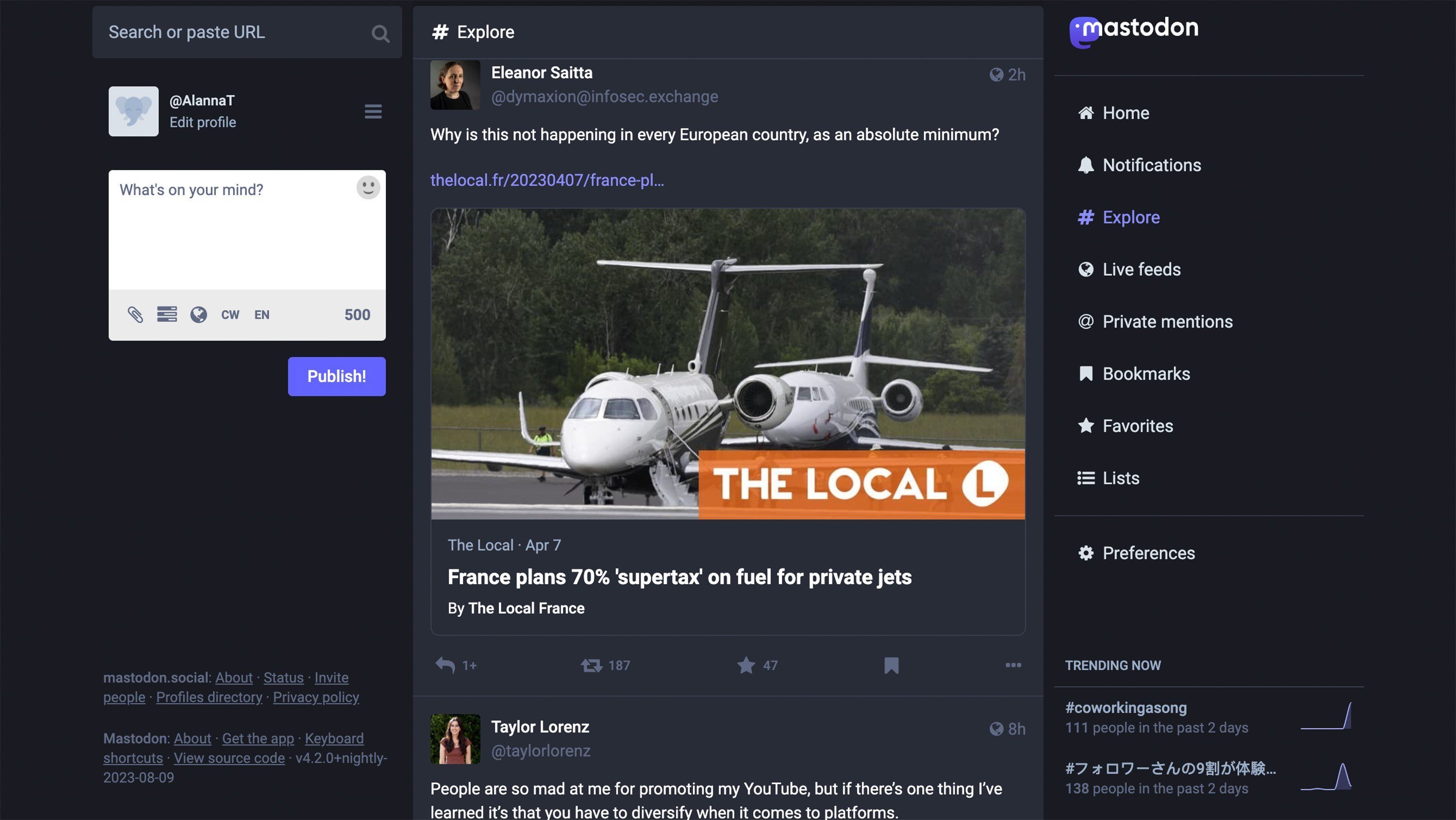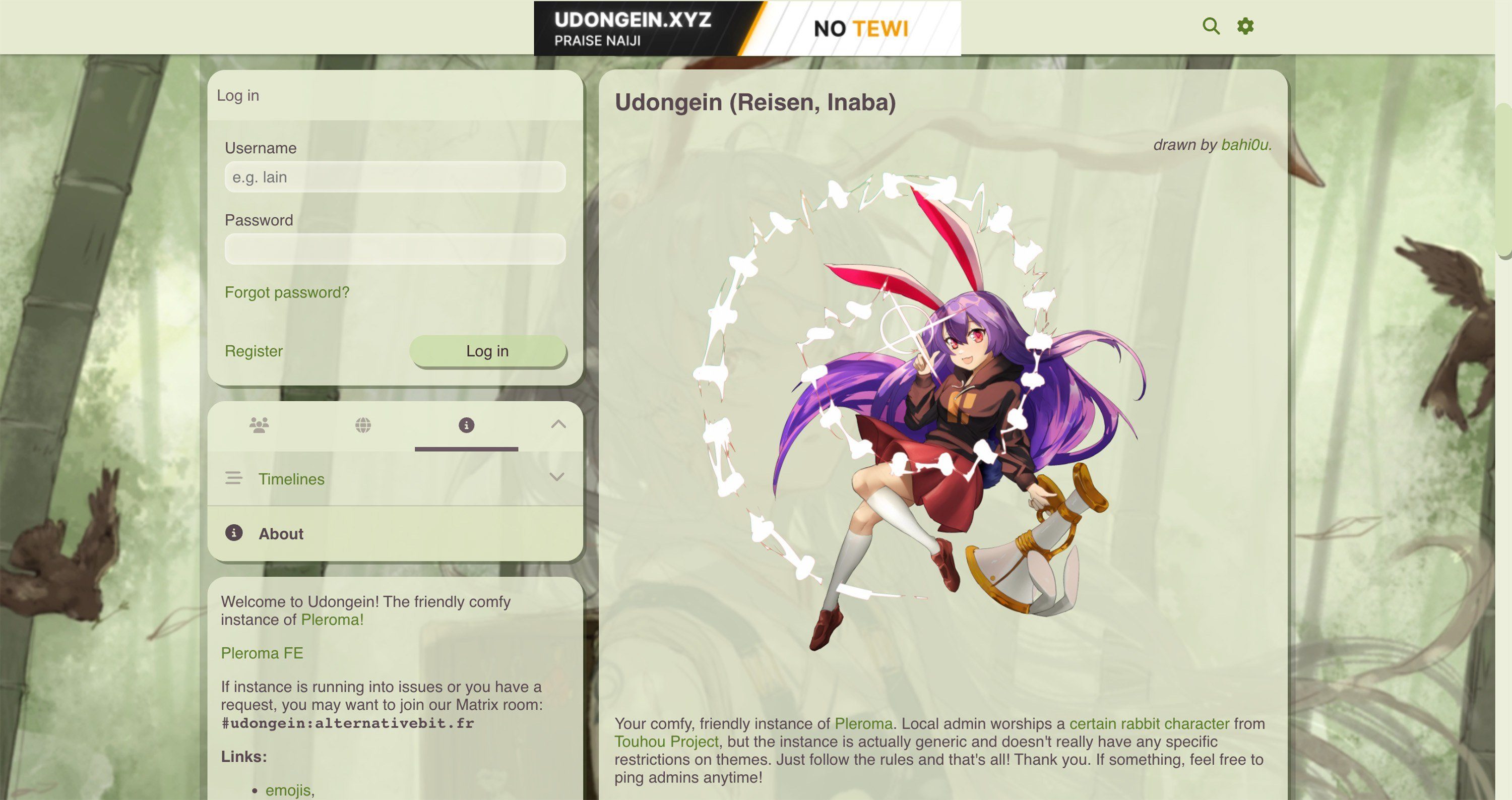After Elon Musk “broke” his Twitter (now known as X) and Mark Zuckerberg released his Threads, there’s been a lot of talk on the internet about something called the Fediverse. Many see it as humanity’s last hope to escape the current social network mess.
In this post, we take look at what this Fediverse is, how it works, what it offers users right now, and what it may change in the near future.
What’s wrong with regular social networks?
Let’s start with why Fediverse is needed in the first place. The main problem with today’s social networks is that they’ve become too closed and self-absorbed (not to mention there are an awful lot of them). Often, you’re not even able to access a significant portion of a social network’s content if you’re not registered on it — and don’t even think about further interactions on the platform.
For example, to like a post on Twitter or leave a comment on a YouTube video, you have to be registered. When it comes to social networks that are part of Mark Zuckerberg’s empire, it’s even worse: without an account, you usually can’t even get acquainted with the content, let alone like it.
The second major problem with social networks is that they don’t really produce anything themselves. Users create all the content on social networks, which the massive and powerful corporations behind the networks then profit from. And, of course, corporations have absolutely no respect for their users’ privacy — collecting an incredible amount of data about them. This has already led to major scandals in the past, and will most likely result in a whole bunch of problems in the future if nothing changes drastically.
The way things are currently organized, there’s another significant risk associated with the complete lack of user control over the platforms that they are, in fact, creating. Let’s just imagine a huge social network, which just happened to play a significant role in global politics, being taken over by a person with rather peculiar views. Its users are left with no choice but to adapt — or look for another platform with a more reasonable owner.
The Fediverse is designed to solve all these problems of conventional social networks: excessive centralization, complete lack of accountability, content isolation, collection of user data, and violation of user privacy.
The theoretical side: what the Fediverse is, and how it works
The Fediverse (a combination of “federation” and “universe”) is an association of independent social networks, which allows users to interact with each other in much the same way as they would within a single platform. That is — read, subscribe/follow, like, share content, comment, and so on.
And each platform participating in the Fediverse is federated itself: it consists of a community of independent servers (referred to as “instances” within the Fediverse).
An essential feature of the Fediverse is therefore decentralization. Each instance within the Fediverse has its owners (who independently create and maintain the server and bear all expenses for its operation), its own user community, rules, moderation system, and often some sort of theme.
The specially designed ActivityPub protocol is used for interaction among all these independent instances. ActivityPub is developed by the organization that specializes in creating common protocols that the internet runs on — the World Wide Web Consortium (W3C).

Mastodon.social is the largest instance of Mastodon, the largest social network in the Fediverse
Anyone can create their own instance within the Fediverse. All you have to do is:
- Rent or set up a server at home;
- Install the appropriate server software on it (usually open-source, free);
- Connect to the internet;
- Pay for the domain;
- Create a community, and develop its rules, theme, and so on.
It’s important to note that a significant portion of the Fediverse, at least for now, runs on pure enthusiasm, and sometimes on donations from supporters or some occasional banners. There’s currently no sustainable commercial model here, and it seems that there is no intention to implement one yet.
How the Fediverse works for the average user
From an ordinary user’s perspective, they register on one of the servers that belong to a particular social network that’s part of the Fediverse. Then with this same account they can interact with users from any other servers within the Fediverse network, as if you can use a Twitter account to comment on a YouTube video or follow someone on Instagram. This removes the boundaries between different social networks, along with the need to create separate accounts in each of them.
However, in reality, it’s not as simple as it sounds: Fediverse instances are often quite closed communities, not particularly welcoming to outsiders, and registration can often be inaccessible. Logging into one social network with an account from another is usually not possible at all. Moreover, there’s no way to search across instances in the Fediverse.
So, basically, yes, you can indeed access the content of (almost) any Fediverse user without leaving the instance where you’re registered. You can probably even comment, like, or repost that user’s content, all while staying within the comfort and familiarity of your own instance. But there’s one catch — you need to know the address of that user. And knowing it isn’t so simple because, as mentioned above, there’s no search function in the Fediverse.
Pixelfed — A federated alternative to Instagram
Explaining the Fediverse by analogy
Most people use the analogy of email to explain the Fediverse: it doesn’t matter which server you’re registered with, you can still send an email to anyone; for example, to your mom’s Gmail account from your work address at bigcorp.com. But personally, I think email is not the best analogy here — it’s too simple and uniform. In my opinion, it’s much better to describe the Fediverse in terms of the good old telephone system.
The global telephone system integrates a bunch of different technologies, from rotary dial phones connected to analog switching centers, to smartphones on the cutting-edge 5G network, and from virtual IP telephony numbers to satellite-link communication. For the end user, the technological solution underlying any particular network is completely unimportant. And there can be any number of these networks. They all support a single protocol for basic interaction, making them compatible with each other — you can call any number, whether it’s virtual or satellite.
Similarly, in the Fediverse, whether a platform is primarily text-based, video streaming, or graphic, it can participate in the project and its users can “call” other platforms.

This is how one of the instances of the microblogging platform Pleroma looks. Source
However, the compatibility of telephone networks is far from complete. Each network may have its own special services and features — try sending an emoji to your great-grandmother’s landline phone. And on top of universal addressing (the international phone number format) there are often some local quirks: all those 0s or 00s instead of a normal country code, the possibility of not entering any codes at all when calling within a specific network (such as a city or office network), different formats for recording numbers (various dashes, brackets, and spaces, which can easily confuse people unfamiliar with local rules), and so on.
Again, the same goes for the Fediverse: while its platforms are generally connected and compatible at the top level, the user experience and functionality vary greatly from one platform to another. To figure out how to make long-distance calls perform a certain action on a given service, you often have to delve into the local specifics. It might actually be impossible to “call” certain instances because, while they formally support all the necessary technologies, they’ve decided to isolate themselves from the outside world for some reason.
In general, compared to email, the Fediverse is a much more diverse and less standardized collection of relatively unique instances. But despite this uniqueness, these instances do allow their users to interact with each other to some extent since they all support a common protocol.

Lemmy — one of the Reddit analogs in the Fediverse
The practical side: which services are compatible with the Fediverse now, and which ones will be in the future
Now let’s turn to the practical side of the issue — what social networks are already operating within the Fediverse. Here’s a list of the most significant ones:
- Mastodon — The largest and most popular social platform within the Fediverse, accounting for about half of its active users. It’s a microblogging social network — a direct Twitter analogue.
- Misskey and Pleroma — Two other microblogging platforms that attract users with their atmosphere and cozy interface. Misskey was created in Japan, which has ensured its high popularity among fans of anime and related topics.

Misskey — microblogging with a Japanese twist
- PixelFed — A social networking platform for posting images. It’s a Fediverse version of Instagram but with a focus on landscape photography rather than glamorous golden poolside selfies.
- PeerTube — A video streaming service. I’d like to say it’s the local equivalent of YouTube. However, since creating video content is so expensive, this analogy doesn’t completely hold up in reality.
- Funkwhale — An audio streaming service. This can be considered a local version of Soundcloud or Spotify — with the same caveat as PeerTube.
- Lemmy and Kbin — Social platforms for aggregating links and discussing them on forums. Sounds complicated, but they’re basically federated versions of Reddit.
Of course, these aren’t all the platforms within the Fediverse. You can find a more comprehensive list here.
A glimpse into the global future of the Fediverse
Another service worth mentioning that currently supports the ActivityPub protocol is the content management system WordPress. Some time ago an independent developer created a plugin for WordPress to ensure compatibility with this protocol.
Recently, Automattic, the company that owns both WordPress and Tumblr, acquired the plugin and hired its developer. Meanwhile, at the end of last year, Tumblr also announced future support for ActivityPub. Apparently, Automattic really believes in the potential of the Fediverse. Mozilla, Medium, and Flipboard are also now showing serious interest in the Fediverse.
But the most important — and quite unexpected — development for the federation of decentralized social networks was the promise made by Mark Zuckerberg’s company to add ActivityPub support to the recently launched social network Threads. It’s not yet been specified when exactly this will happen or in what form; however, if or when it does, several hundred million people from Threads/Instagram may suddenly join the existing few million Fediverse users.
What will this sudden popularity lead to? This isn’t such a simple question. Many long-time Fediverse users are visibly concerned about a possible invasion of “tourists”, and how these newcomers — accustomed to the noise of “big” social networks — will impact the communities that have been so carefully cultivated within the project.
How will the Fediverse cope with these sudden changes? Only time will tell. But one thing’s for sure: the further development and evolution of the Fediverse will be very interesting to watch…
 Technology
Technology

 Tips
Tips